The 15 Largest Rivers in the World
↓
Continue Reading To See This Amazing Video
Mục Lục
Key Points:
- Brahmaputra-Yarlung Tsangpo River: 2,466 Miles
- Niger River: 2,611 Miles
- Mackenzie River: 2,637 Miles
Rivers are bodies of moving water that provides food, security, transportation, and access to water. Many of humanity’s largest civilizations have thrived on riverbanks, starting with Sumer and Mesopotamia thousands of years ago.
Rivers are still incredibly important to humans, and the bigger the river, the more people it supports. That’s why we are going to examine the 15 largest rivers in the world. We’ll consider how each of these vast rivers has been a key to the civilizations it supports.
What Is a River?
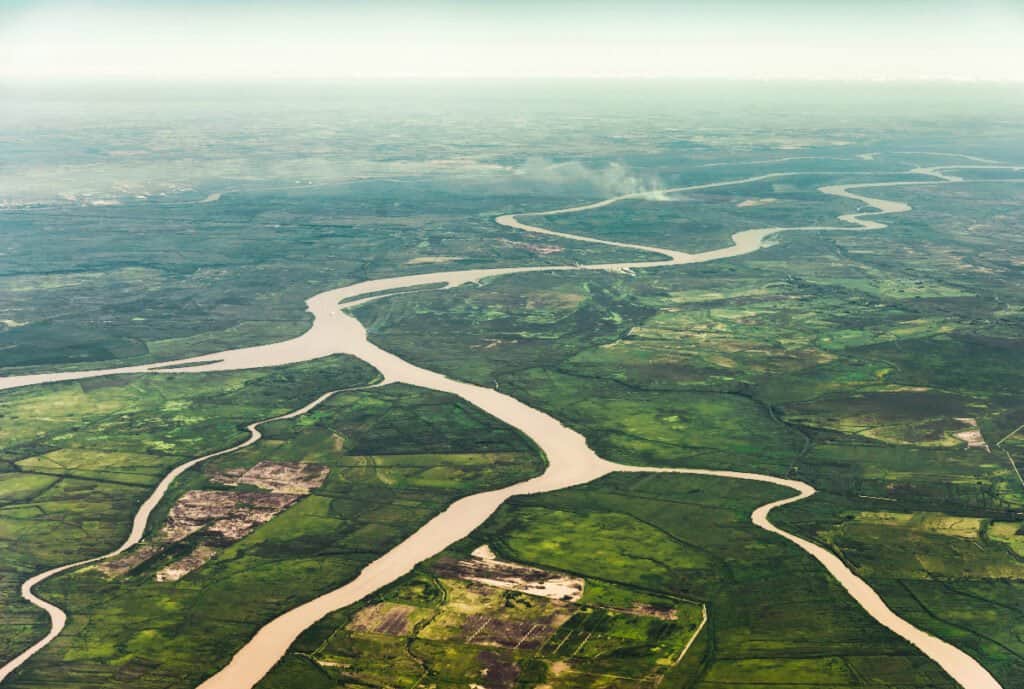 Rivers are found all over the world
Rivers are found all over the world
©Alexandr Vorobev/Shutterstock.com
A river is a flowing body of water with defined boundaries that drains into another body of water. Rivers are made of several different parts, including:
- River Basin (Drainage Basin, Watershed): an area of land where precipitation accumulates and flows into a river.
- Headwaters (Source): the streams or lakes that provide water at the earliest part of the river.
- Flow: refers to the water comprising the river or to the water’s direction of travel.
- Tributaries (Affluent): sources of water that feed into a river.
- Channel: the confines of the body of water.
- River Mouth: the place where the river reaches its end, either flowing into a delta, becoming a tributary for another river, or the ocean.
These are just a few of the most significant parts of a river with their most basic definitions provided. However, this information should be enough to conceptualize the most important areas of these waters.
How Do We Measure the Largest Rivers in the World?
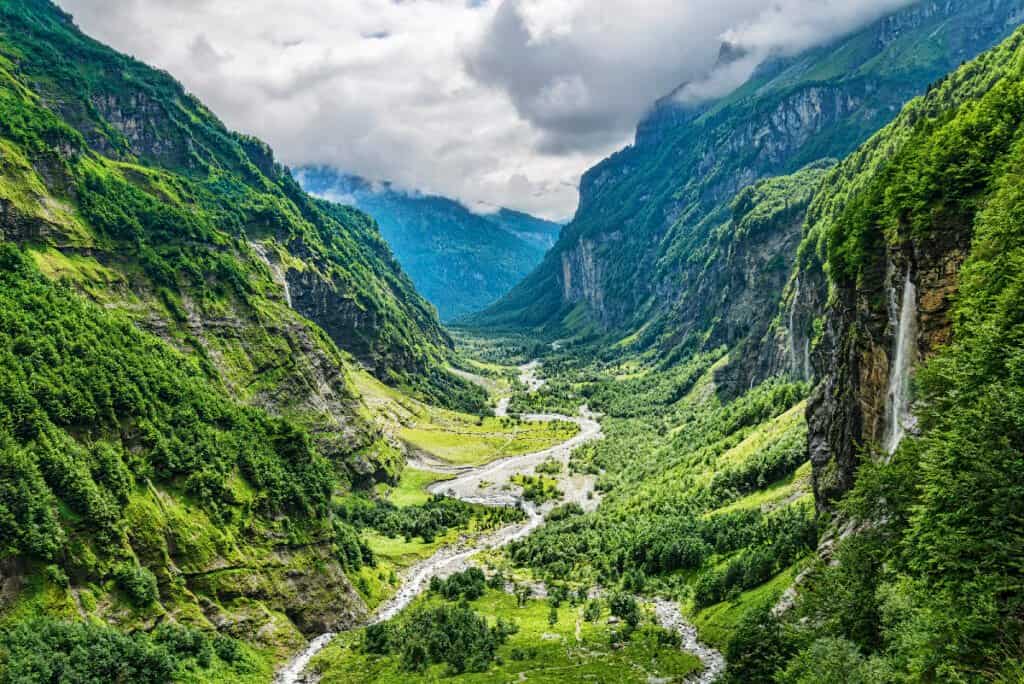 The largest rivers in the world are the longest rivers
The largest rivers in the world are the longest rivers
©iStock.com/Ivan Aleshin
When we talk about the largest rivers in the world, we are referring solely to the river’s length.
There are two ways that we can list the longest rivers in the world:
- Measure the total length of major river systems
- Measure the total length of individual rivers
For example, the Mississippi River is a significant river on its own. Yet, the Mississippi River is part of a larger network called the Mississippi-Missouri River system that has a far greater overall length.
Also, these rivers are actually connected. The Missouri River is a tributary of the Mississippi River, so removing that significant portion of the length would be akin to removing the measure of the White Nile from the main Nile River.
In my opinion, it would be a disservice to list connected river systems individually. Considering the entire length of river systems is the truest way to get a consistent ranking for these rivers.
That is why our list of the largest rivers will include the measurements and names of the largest river systems, but we’ll also explain the lengths of individual rivers where applicable.
The 15 Largest Rivers in the World
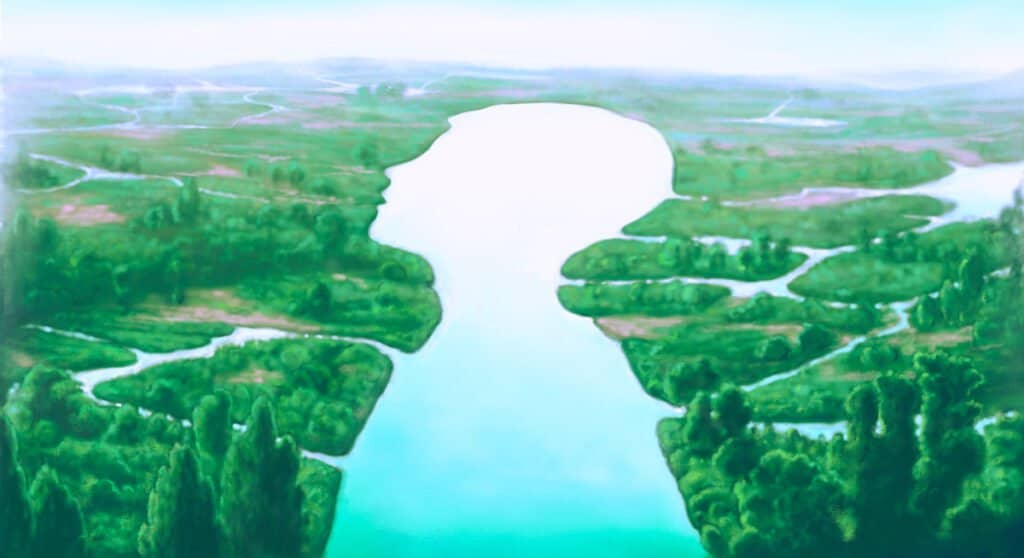 Large rivers support humanity
Large rivers support humanity
©Jorm S/Shutterstock.com
The largest rivers in the world are all longer than 2,000 miles. The shortest of them all starts at 2,466 miles, a measure that is almost equal to the width of the United States! Every river on this list is immense in both size and importance to the lands around it, even if it’s just a remote area for commerce to occur.
Keep in mind that when we measure entire river systems, we’re simply going to list the common name for the river system in the title and then clarify our statements in the comments.
With that in mind, let’s start this examination by looking at the Brahmaputra river.
15. Brahmaputra-Yarlung Tsangpo River: 2,466 Miles

©Meiqianbao/Shutterstock.com
The Brahmaputra River flows through India, Bangladesh, and Tibet. The Yarlung Tsangpo is the river’s long upper course, and the Brahmaputra is the lower course.
This river’s mouth is the Ganges River, and it flows a long way to reach it. The river is known for providing water to many people and providing water for agriculture. This river is very significant for transportation, too.
14. Niger River: 2,611 Miles
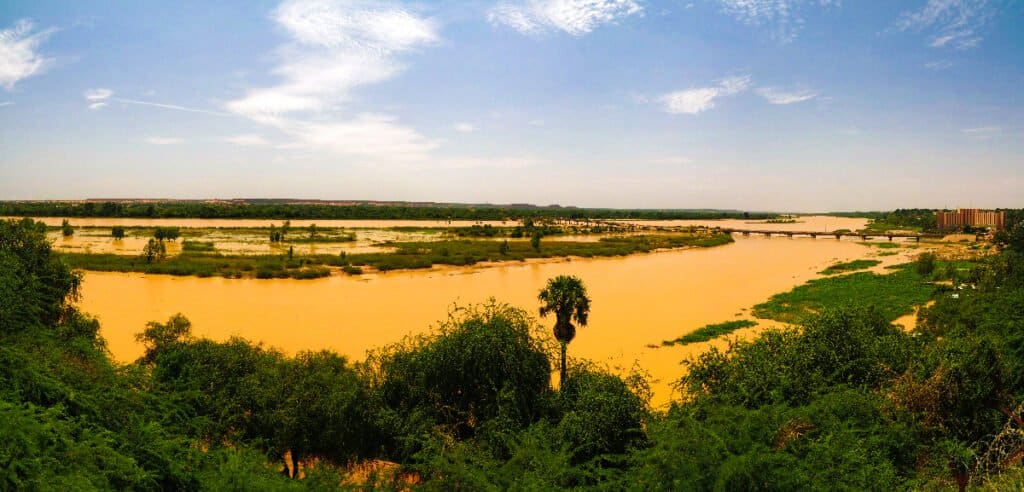 The Niger River was important to human growth in Africa
The Niger River was important to human growth in Africa
©Homo Cosmicos/Shutterstock.com
The fourteenth biggest river in the world, the Niger River flows through Benin, Mali, Guinea, Niger, and Nigeria. Like other river systems, this one goes by many names, but it’s known for its low sediment and clear water. This river was very important to the development of humanity. Humans flocked to this area as the Sahara underwent desertification, leading to the domestication of animals in the area and the overall growth of farmland.
13. Mackenzie River: 2,637 Miles
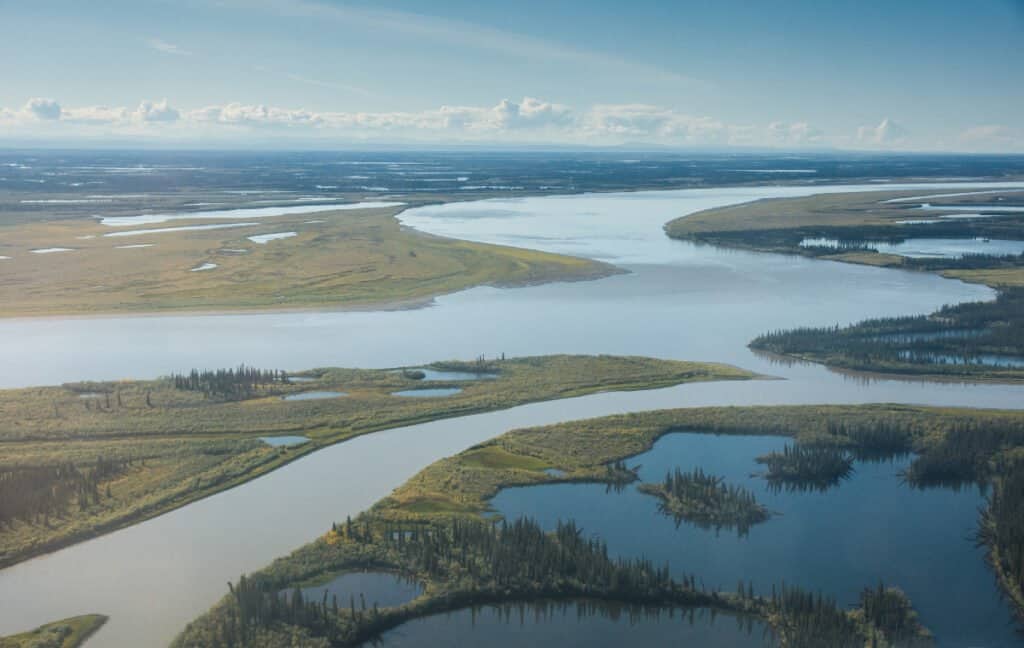 The Mackenzie River is part of a larger river system that includes the Slave, Peace, and Finlay rivers
The Mackenzie River is part of a larger river system that includes the Slave, Peace, and Finlay rivers
©iStock.com/eppicphotography
The Mackenzie River is a rather remote river that extends through Canada’s Northwest Territories and Yukon areas. Officially, it is part of the Mackenize-Slave-Peace-Finlay River system.
This river is famous for being a site where gold, lead, uranium, and other minerals have been found, and it’s a former oil boom area. Although this place isn’t highly populated, the river has been used quite often for hydroelectricity production. The Mackenize River’s mouth is located in the Beaufort Sea in Canada.
12. Mekong River: 2,705 Miles
 The Mekong River is one of the most dammed rivers in the world
The Mekong River is one of the most dammed rivers in the world
©Mike Towers/Shutterstock.com
The Mekong River stretches into many different countries including China, Thailand, Laos, Vietnam, Myanmar, and Cambodia. This river serves as a lifeline for millions of people that live alongside its banks.
The Mekong River is home to the Khon Phapheng Falls, a vast waterfall that limited explorers as they tried to navigate upstream from the Mekong Delta. The mouth of the river is located in the Mekong Delta. This river is known for its vast fisheries as well as the ongoing generation of hydropower in the Mekong basin.
11. Lena River: 2,736 Miles
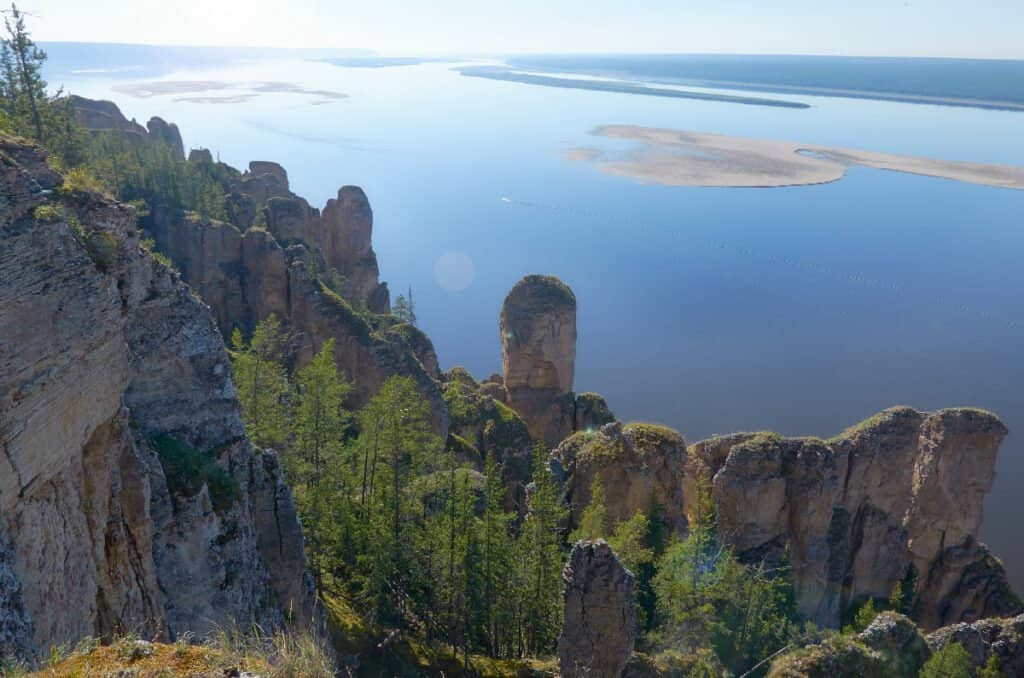 The Lena River has been the site of many archaeological discoveries, including mammoth tusks
The Lena River has been the site of many archaeological discoveries, including mammoth tusks
©FotoSovushka/Shutterstock.com
The Lena River runs through Russia for over 2,700 miles, eventually reaching the Laptev Sea far to the north. The area is very remote and beautiful. The elevation at the origin site of the river is over 5,000 feet, and the river receives water from a wide variety of tributaries.
10. Amur River: 2,763 Miles
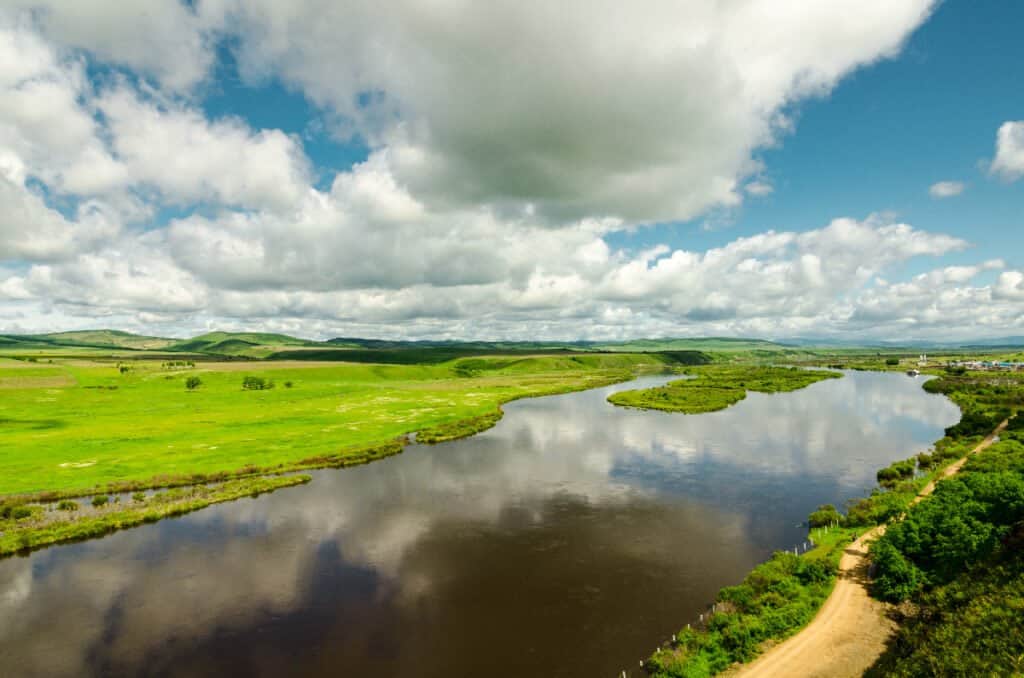 The Argun River has been a boundary between Russia and China since 1689
The Argun River has been a boundary between Russia and China since 1689
©iStock.com/Yuanping
The Amur-Argun-Kherlen River system flows through China and Russia. The name is derived from a term that means “wide river”. The river is a natural boundary between China and Russia, and names for this river exist in Chinese, Russian, and Mongolian.
9. Congo River: 2,922 Miles
 The Congo River is the second-longest river in all of Africa
The Congo River is the second-longest river in all of Africa
©iStock.com/Fanny Salmon
The Congo River runs through the Democratic Republic of the Congo, and it used to be known as the Zaire River. The river is part of a system called Congo-Lualaba-Chambeshi, and that overall length is the one measured here. It’s also the second-largest river in the entire world by sheer discharge volume.
Interestingly, this is also the world’s deepest river, at least the deepest confirmed depth (parts of the river are so deep light can’t penetrate its depths).
8. Rio de la Plata: 3,030 Miles
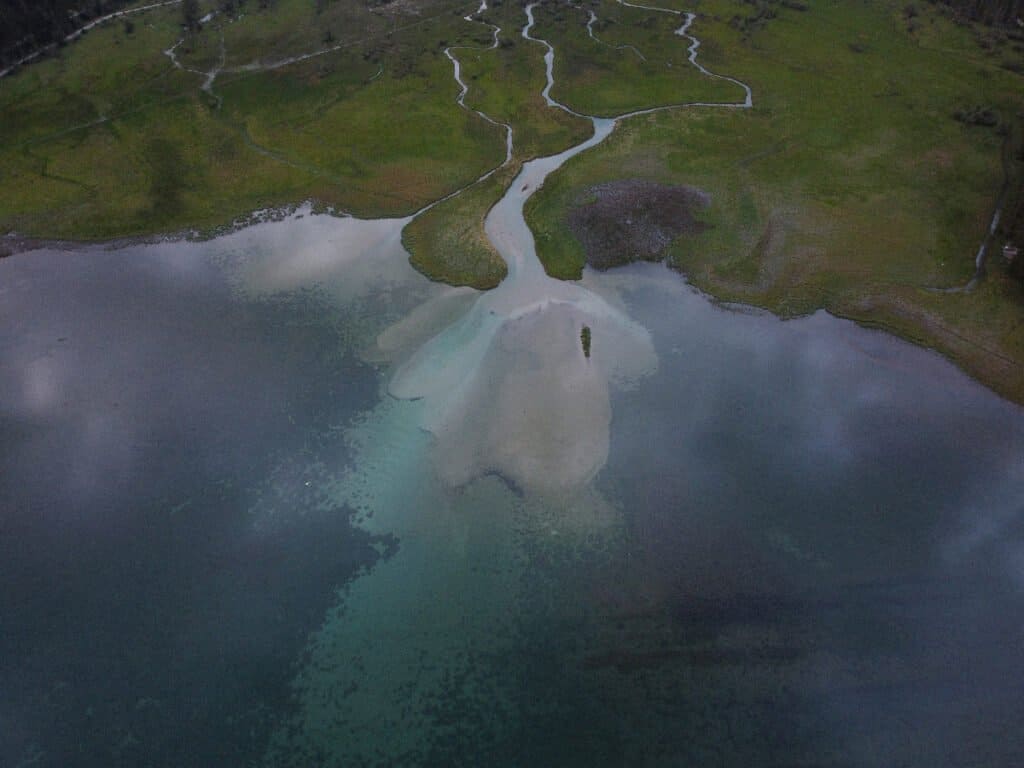 Rio de la Plata runs through Argentina and Uruguay
Rio de la Plata runs through Argentina and Uruguay
©Wirestock Creators/Shutterstock.com
The Rio de la Plata is a very long river that has a rich history. Officially, the measurement of this river stems from the total measure of the Rio de la Plata-Parana-Rio Grande River system. The river is one of the few that has a high level of salinity in the water.
Interestingly, the river was the site of a few naval battles such as the Battle of the River Plate in 1939, a part of World War II. The river was hugely important in the colonial period, serving as a location for trade.
7. Ob River: 3,364 Miles
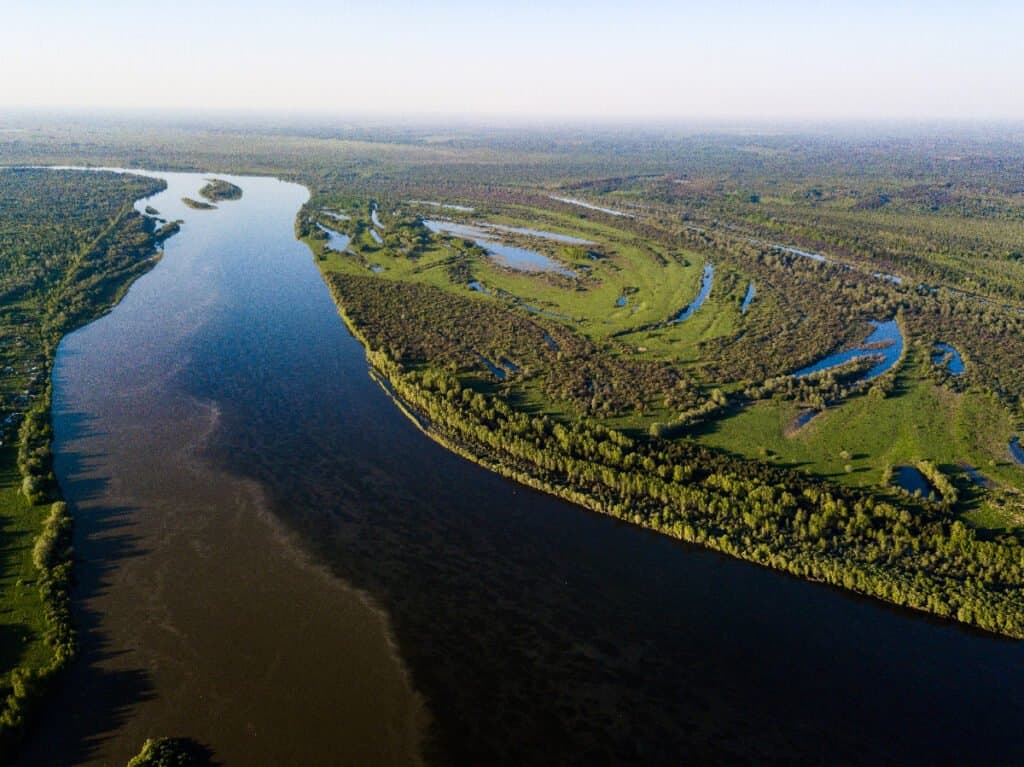 Novosibirsk is on the banks of the Ob River
Novosibirsk is on the banks of the Ob River
©Dmitriy Kandinskiy/Shutterstock.com
The Ob-Irtysh River is a very long, significant water feature in Siberia, Russia. The river only runs through Russia, and its mouth is at the Gulf of Ob. The river is currently used for agriculture, hydroelectricity, and drinking water around the city of Novosibirsk, the largest city in Siberia and the third largest in Russia. The length of this river is disputed; it may be the 6th or 7th longest in the world depending on the source of information one follows.
6. Yellow River: 3,395 Miles
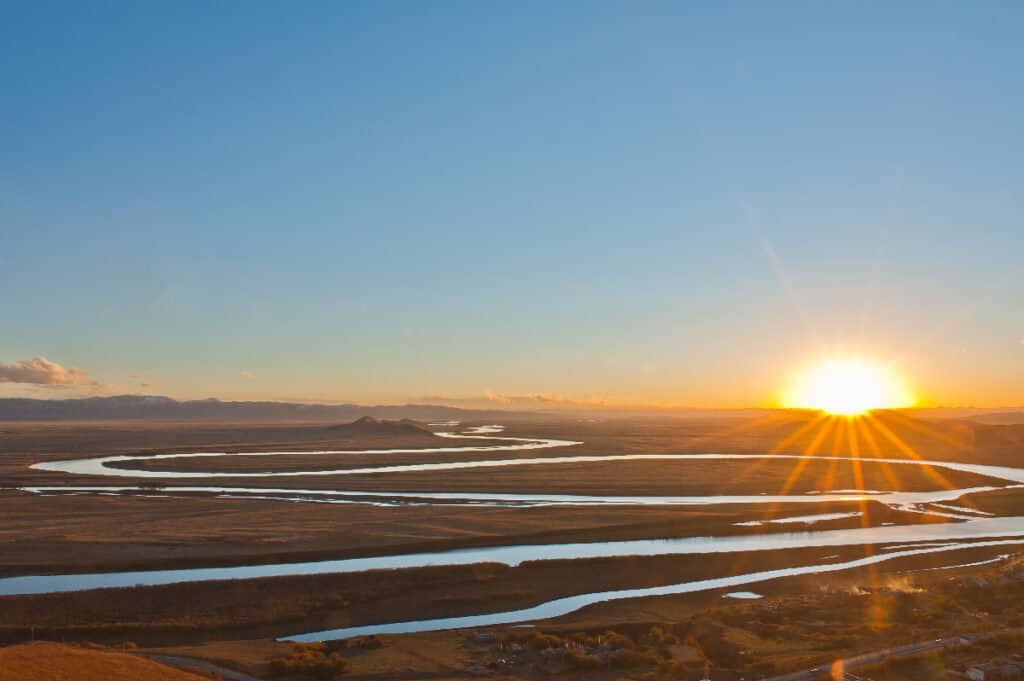 The Yellow River is a very long river that drains into the Bohai Sea
The Yellow River is a very long river that drains into the Bohai Sea
©cnyy/Shutterstock.com
The sixth biggest river in the world, the Yellow River runs through China, and it’s considered one of the most important places in Chinese history. After all, the agricultural centers and cities that developed along this river helped propel China into an era of prosperity starting in Ancient China. These days, the river is still important as a source of hydroelectric power and for agriculture. The river runs west to east across a vast swath of China and into the Bohai Sea.
5. Yenisei River: 3,445 Miles
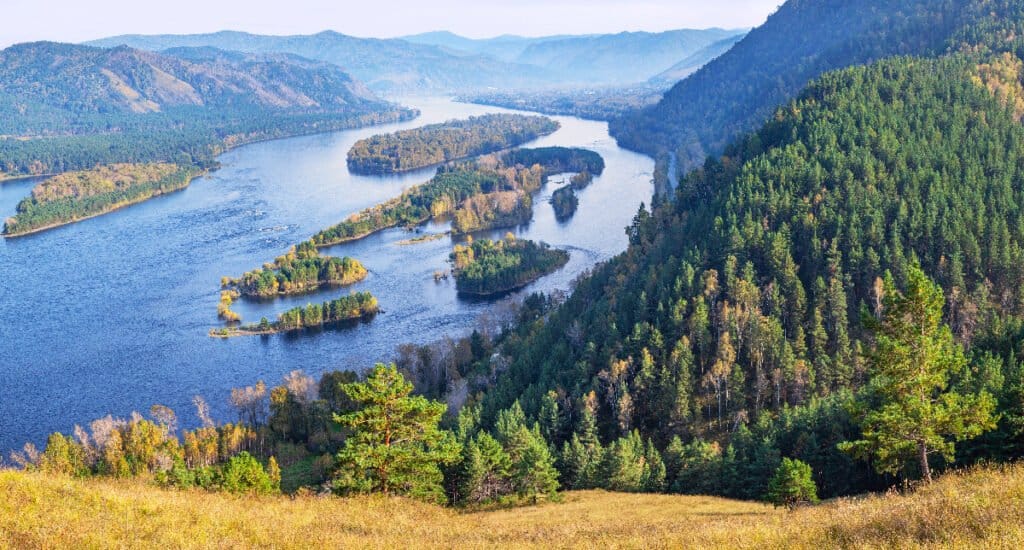 The Yenisei River basin includes Lake Baikal, the deepest lake in the world
The Yenisei River basin includes Lake Baikal, the deepest lake in the world
©Valerii_M/Shutterstock.com
The Yenisei-Angara-Selenga-Ider River system is a Russian river that flows into the Arctic Ocean. The name possibly comes from a phrase meaning “mother river.” That would be a realistic name given how many people have benefitted from this river’s water. The river was home to nomadic tribes in the past, and it has some large settlements along with it today.
4. Mississippi River: 3,902 Miles
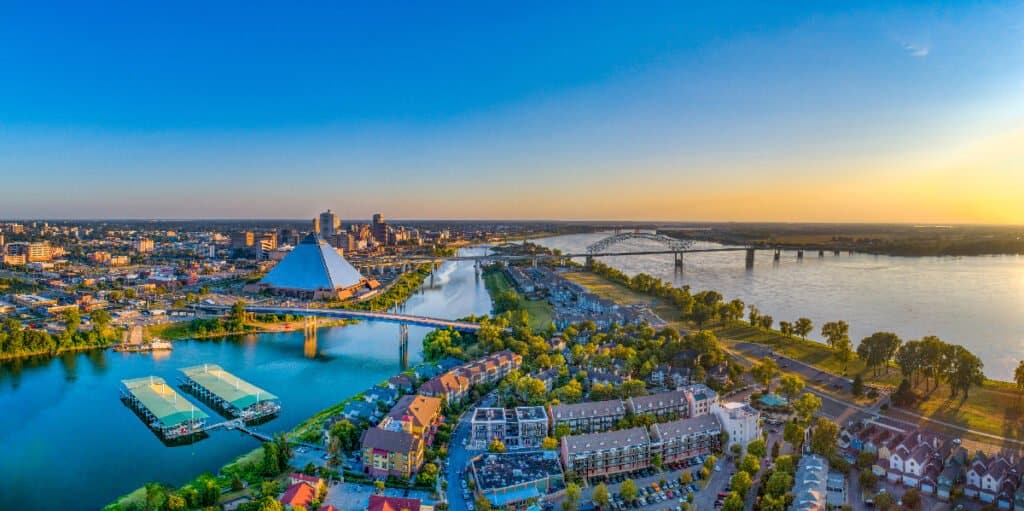 The Mississippi River is the most famous river in the United States
The Mississippi River is the most famous river in the United States
©iStock.com/Kruck20
The Mississippi-Missouri-Jefferson River system measurement may seem confusing at first. After all, the Mississippi River alone is merely 2,340 miles long. However, when we measure river lengths, we go from the farthest source of the river. That is the Jefferson River in this case.
Ultimately, the water flows out into the Gulf of Mexico, but not before it provides water for a dozen cities and resources for flora and fauna to flourish.
This river played an important role in the Civil War era and continues to be important today. Surprisingly, when not measuring the total river system but individual rivers themselves, the Missouri River actually tops the Mississippi as the largest river in the United States!
3. Yangtze River: 3,917 Miles
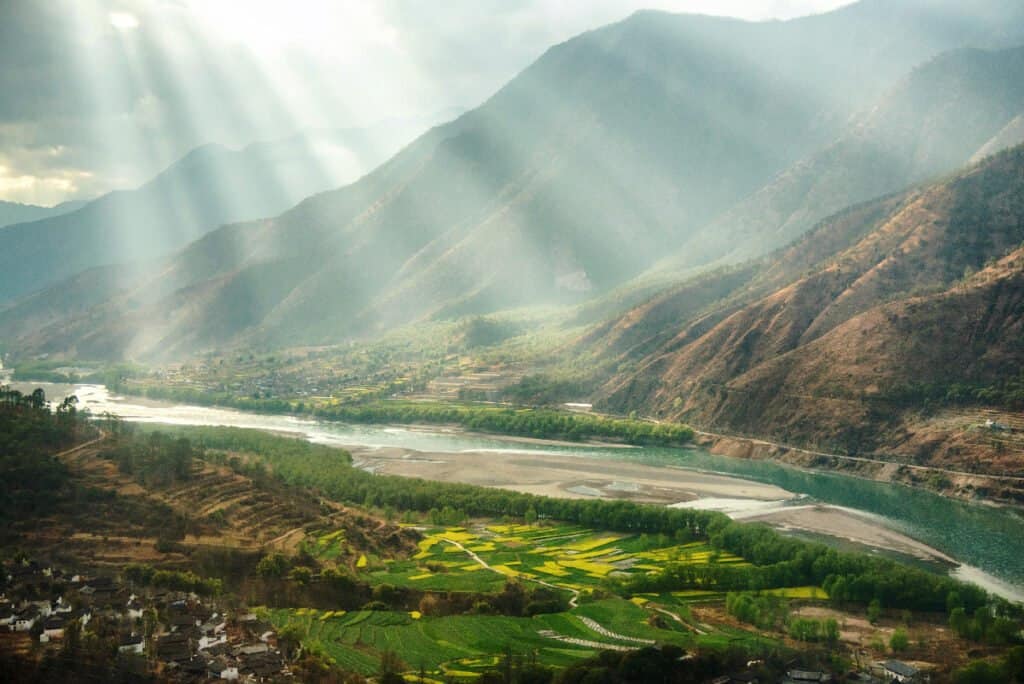 The Yangtze River is the longest river in Asia
The Yangtze River is the longest river in Asia
©iStock.com/martinhosmart
The Yangtze-Jinsha-Tontian-Dangqu River system is such a long body of water that it was given several different names at different points as the river flowed across Tibet and China.
This river is home to many unique plants and animals, has served as a base of trade, and continues to help the country by being a source of immense hydroelectric energy generation. The river connects many cities together in trade and travel. The Yangtze River is the longest in Asia!
2. Amazon River: 3,976 Miles
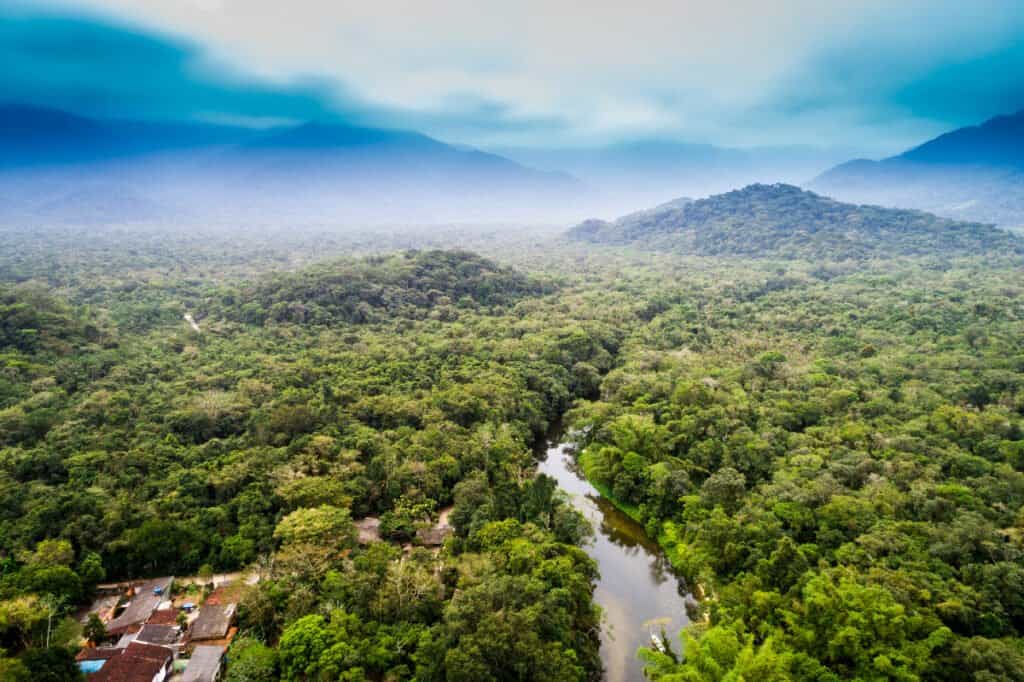 The Amazon River is both long and remote in areas
The Amazon River is both long and remote in areas
©iStock.com/gustavofrazao
The Amazon-Ucayali-Tambo-Ene-Mantaro River system is the second-largest river in the entire world. This river stretches across Peru, Colombia, and Brazil. In fact, it flows almost clearly across the continent of South America.
This driver supports some of the areas with the greatest biodiversity in the world. The river still supports indigenous tribes and highly developed cities alike. The mouth of this river is the Atlantic Ocean, where the Amazon River has the highest discharge of any river in the world.
1. Nile River: 4,130 Miles
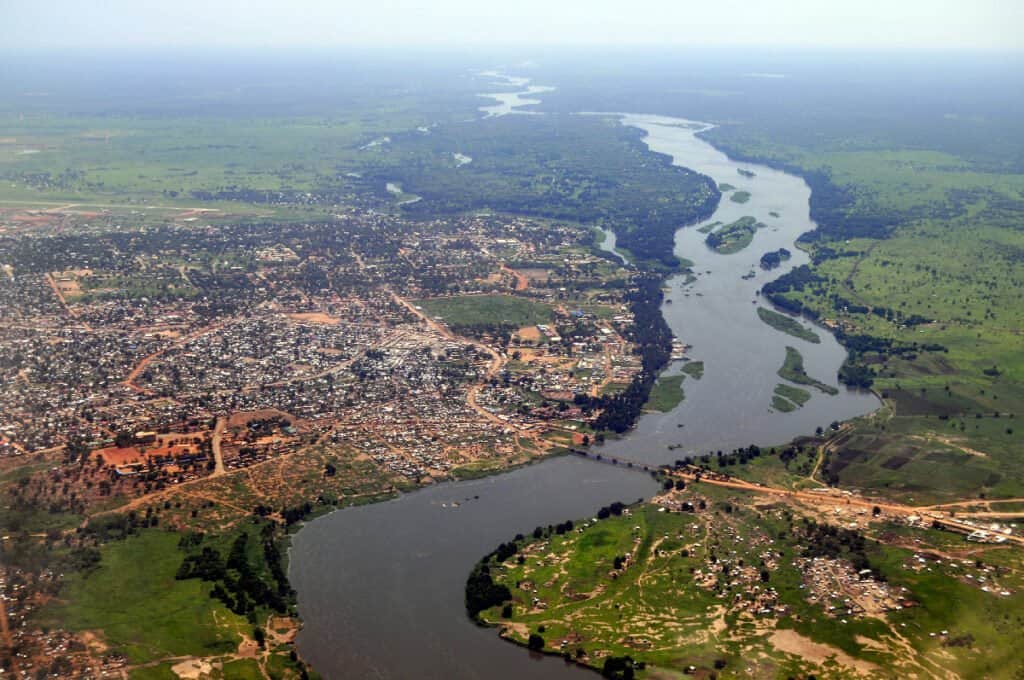 The Nile River was once considered the longest river in the world, and it’s the longest in Africa
The Nile River was once considered the longest river in the world, and it’s the longest in Africa
©iStock.com/Phototreat
The Nile River is the largest river in the world. The Nile-White Nile-Kagera-Nyaborongo-Mwogo-Rukarara River system stretches over 4,000 miles, drawing water from places as far off as the Democratic Republic of the Congo. The Nile River flows from south to north before reaching its mouth in the Mediterranean Sea.
The river’s importance to civilization is impossible to overstate. The Nile River helped Ancient Egypt develop into an amazing and long-lived kingdom. This river has been a source of trade and development for thousands of years and continues to help by providing water and hydroelectric power to the citizens of several nations.
Controversy Over the Length of the Largest River in the World
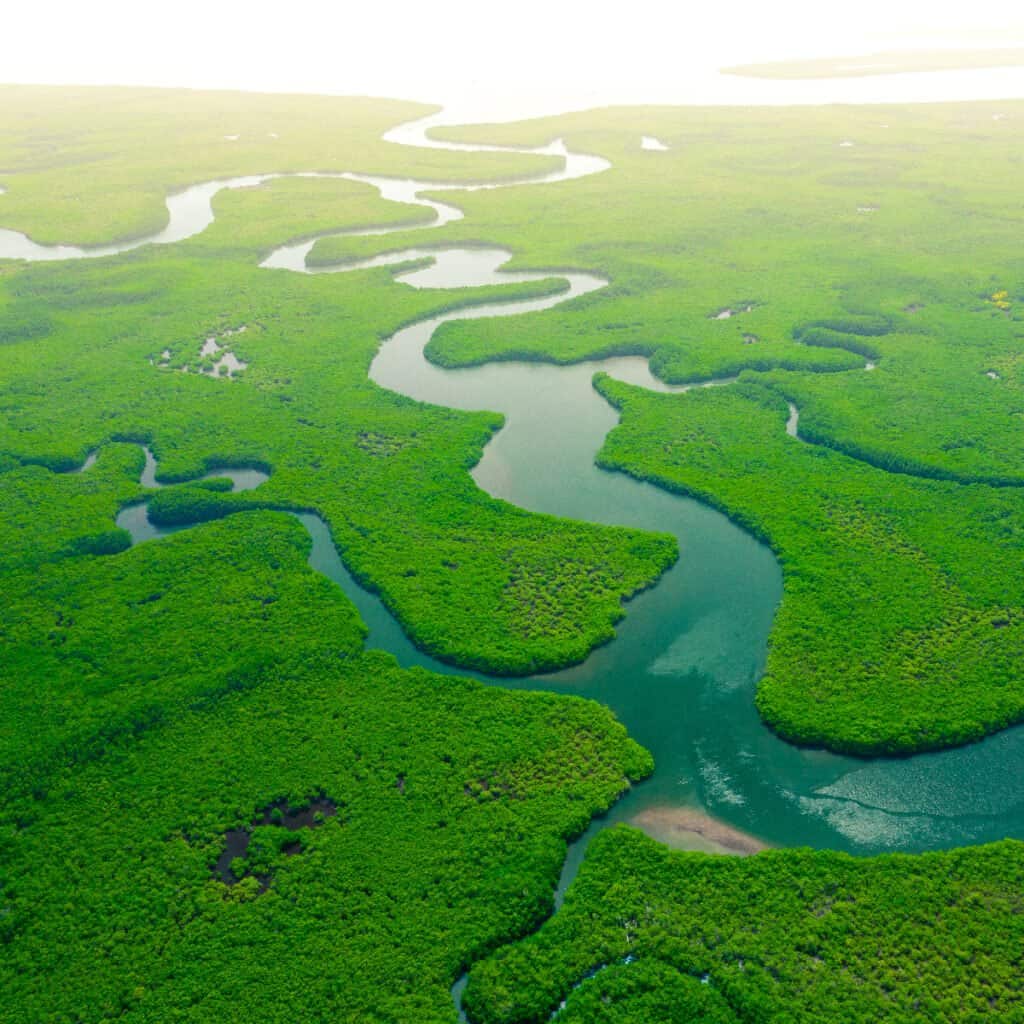 The Amazon River is the longest river system, with nearly a dozen countries in its drainage basin
The Amazon River is the longest river system, with nearly a dozen countries in its drainage basin
©Curioso.Photography/Shutterstock.com
Not all scientists recognize the Nile River as the largest river in the world. One that sought to determine the farthest headwaters of the Amazon River found that the added length of the true headwaters could mean that the Amazon River is longer.
Another study used satellite imagery to measure the rivers and claimed that the Amazon was 6,992.15km (4,344mi) and the Nile River was 6,852.06km (4,257mi).
Yet, a paper published and peer-reviewed in 2009 suggests that the rivers have different measurements and that the Nile is truly the longer of the two. However, this study says that the Nile River is 4,404 miles long and the Amazon River is 4,345 miles long.
The true longest river in the world is a point of contention among scientists to this day, and it could remain unclear. For now, at least, we’re going to give the edge to the Nile River.
You can also check out the longest rivers in the world by volume.
What Types of Animals Live in Rivers?
Many types of animals can be found in rivers, including:
- Fish: catfish, carp, bass, salmon, and many others.
- Reptiles: turtles, alligators, and snakes.
- Birds: ducks, geese, herons, and kingfishers.
- Mammals: river otters, beavers, and muskrats.
- Invertebrates: crayfish, snails, and dragonflies.
- Amphibians: frogs, toads, and salamanders.
The types of animals that live in a river will vary depending on the location and the specific river ecosystem.















![Toni Kroos là ai? [ sự thật về tiểu sử đầy đủ Toni Kroos ]](https://evbn.org/wp-content/uploads/New-Project-6635-1671934592.jpg)


